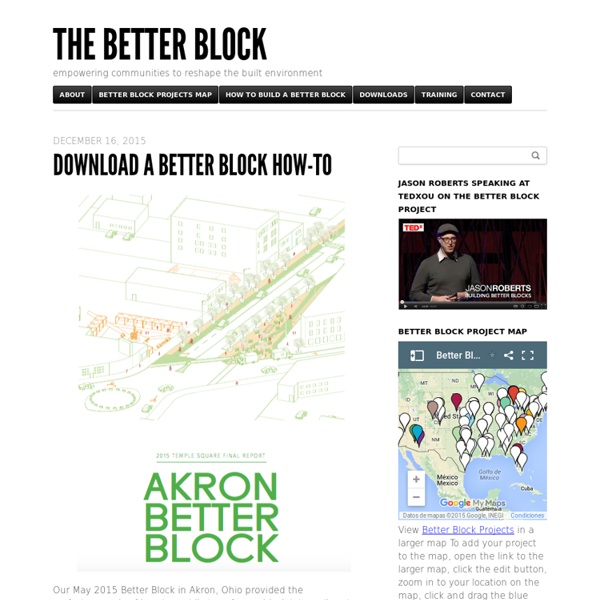



WikiCity – How Citizens can Improve their Cities This post is also available in: Chinese (Traditional) When governments don’t build infrastructure, citizens usually complain, but can’t do much about it. They pressure public officials and protest against proposed projects, but that’s as far as citizen participation in city building usually goes. It’s reactive, not proactive. However, this model of citizen participation is being rethought by citizens around the world. One example of this type of action is Toronto’s Urban Repair Squad. In Mexico, the movement is called wikiciudad (wikicity), and it has the central idea that anyone can edit and modify cities. In Los Angeles, several different groups have tried to address the lack of seating in the streets. The improvements that citizens are building are not always priorities for local governement, but, however tiny and localized, they do make a difference in the way people feel about and interact with the city’s public space. Images courtesy of diegoehg_ and thinkmo on flickr
SUV [sens & utilités en vrac] Nous sommes nombreux à la recherche de moyens pour mettre en place un environnement de travail sain pour soi et nos équipes. Thomas Emmanuel Gérard, coach en entreprise et facilitateur en intelligence collective, nous ouvre, en toute simplicité, la voie à la Mindfulness. Respirez, cela va vous faire du bien…! Qu’est-ce que la mindfulness dont tout le monde parle ? La mindfulness se traduit en français par ‘pleine conscience’. Pourquoi utiliser le terme anglais ‘mindfulness’ plutôt que ‘pleine conscience’ ? C’est une manière de distinguer la pratique laïque de la pratique bouddhiste. Dans quel cadre peut-on découvrir la mindfulness ? Aujourd’hui, la mindfulness a largement dépassé le cadre de la pratique méditative et du développement personnel. Pourquoi avoir choisi d’introduire la mindfulness dans votre activité de coach ? Je pratique la mindfulness au quotidien depuis de nombreuses années et c’est tout naturellement que j’ai choisi de la mettre au cœur de mon métier de coach.
GetUp! Action for Australia Space Makers Agency Le Chat De Mon Voisin | La vérité sort de la bouche des chats ! Occupy Wall Street | NYC Protest for World Revolution Burning Man and the Metropolis Essay: Nate Berg "Intersection," installation by James Reagant and Charles Fields, 2010. [photo by MadeIn1953 via Flickr] It's not exactly the ideal place to build a city. But year after year in late summer, a small city rises on this ancient lakebed in the Black Rock Desert, in Pershing County in northwestern Nevada. Summer 2010On the first night of the most recent Burning Man, Monday August 30, it is 11 p.m. before I get through the lines at the entrance gates. The next morning, my tent is an oven, so I escape out into the sun and the surreal. Top: Burning Man center camp, 2010. At its core, Burning Man is an artistic event. Burning Man is the sort of place where a man in a monkey suit will drive past in a motorized banana and a naked baby boomer with a megaphone will offer you a vodka tonic as you walk down a dirt street. That this city can exist without major catastrophe is due in large part to the organizational skills of its government. Left: The Man, 2010. Black Rock City, 2005.
Web Documentaire Africa Express - tour d'Afrique des énergies en train REVERBERAÇÕES Give a Minute Project Jonathan Schultz Give a Minute homepage features a user interface modeled on Post-it notes. Courtesy Local Projects. One needn’t be a Walden-clutching Luddite to be wary of social media’s creep into the political process. “It doesn’t take a ton of insight to recognize that the existing public participation process does not really work well,” says Jake Barton, founder of Local Projects. His team responded with Give a Minute, a project that encourages urban citizens to organize and act to improve their blocks, stoops, playgrounds, even exercise routines, thereby drawing the attention — and financial support, where appropriate — of city officials. “In our current participation process, the powers that be plop down a plan in front of you,” Barton says. In a pilot program last year, ads in Chicago’s El cars asked passengers, “What would encourage you to walk, bike, or take Chicago Transit Authority more?”
Ônibus Hacker